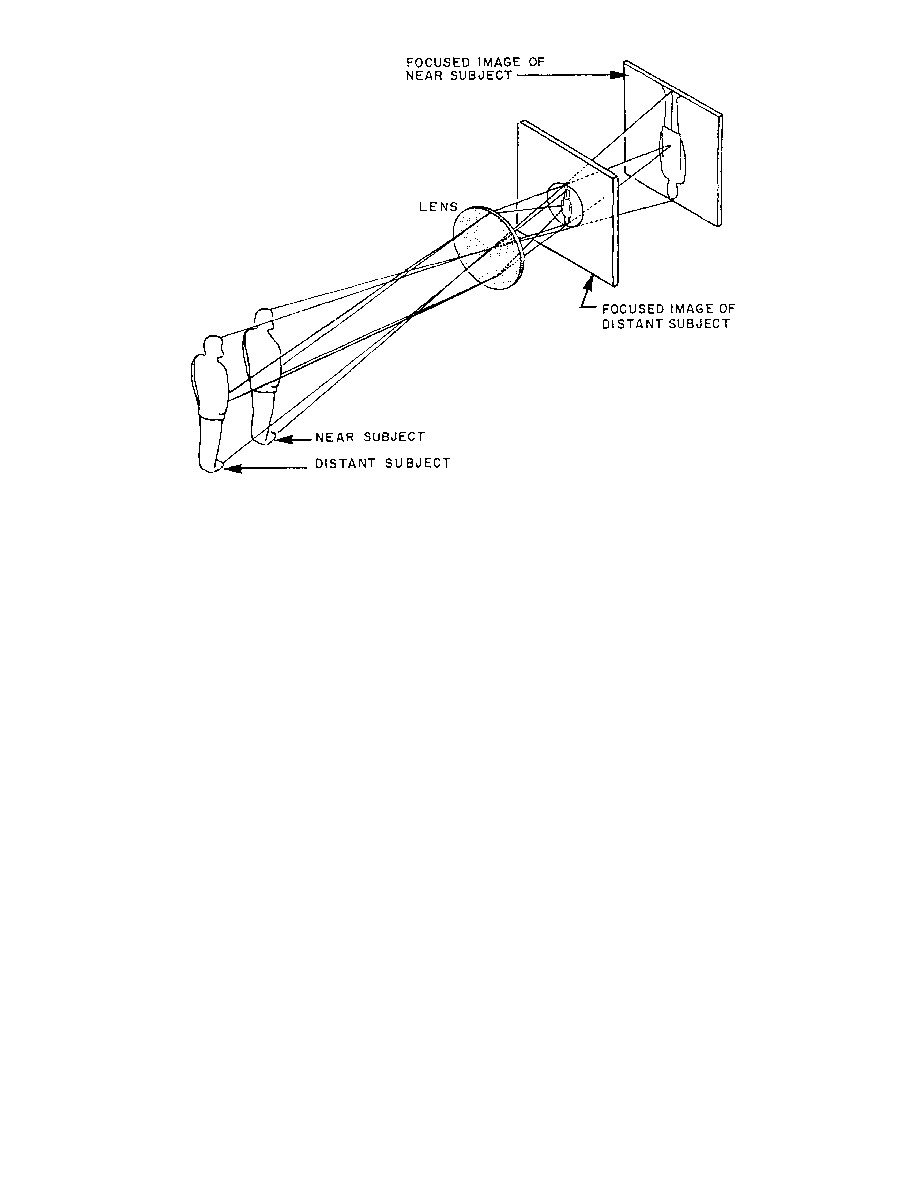
DOFMaster
for Windows
On-line
Depth of Field
Calculator
DOFMaster for Mobile Devices
On-line
Depth of Field
Table
Hyperfocal
Distance Chart
Articles
FAQ
Recommended
Books
Support
Contact
Links
Home
for Windows
On-line
Depth of Field
Calculator
DOFMaster for Mobile Devices
On-line
Depth of Field
Table
Hyperfocal
Distance Chart
Articles
FAQ
Recommended
Books
Support
Contact
Links
Home
As an Amazon Associate I earn from qualifying purchases.
![]()
sometimes called the optimum or critical aperture.
However, when the distance between the focal plane and
the lens can be adjusted, the lens can be made to form
sharp images of objects located at differing distances in
front of it. Therefore, to get a sharp image of a subject
at a given distance, you must adjust the lens to the
appropriate distance from the film plane. This
adjustment is known as focusing.
formed. For close subjects, the lens must be moved away
away the subject is from the lens, the closer to the lens
the film plane must be (fig. 1-25).
are parallel, these rays converge (after refraction by the
lens) at the point of principal focus. The point of
principal focus is on the principal focal plane; that is, at
a distance of one focal length behind the lens. Therefore,
the lens is said to be on infinity focus.
between the focal plane and the lens must be increased
to keep the image in sharp focus. When the distance
between the lens and focal plane is not extended as the
object is moved nearer to the lens, the image of the
object becomes blurred or out of focus. The closer the
lens is to the object it is focused upon, the larger the
image becomes until the distance between the lens and
the focal plane is extended to twice the focal length of
the lens. At this distance, the image and the object
focused upon are the same size. Therefore, the size of
an image formed by a lens is dependent upon two
factors: the distance from the lens to the object focused
upon and the focal length of the lens.
Basic Photography Course

As an Amazon Associate I earn from qualifying purchases.
WWW.DOFMASTER.COM
© 2006 Don Fleming. All rights reserved.
© 2006 Don Fleming. All rights reserved.